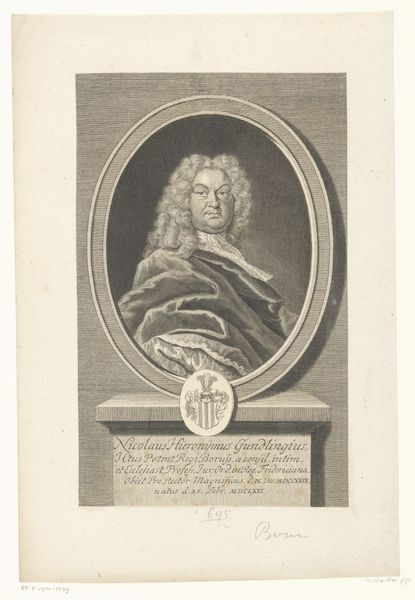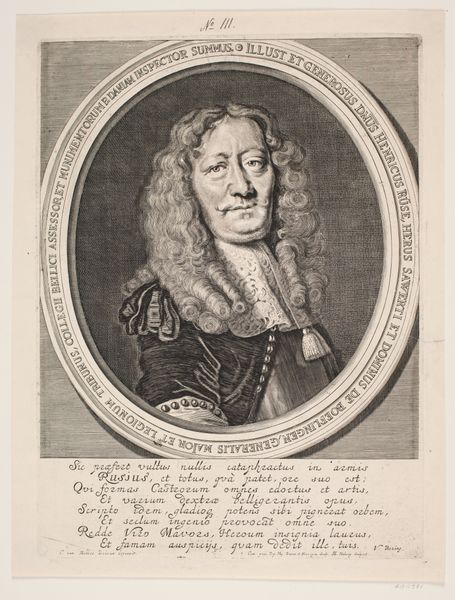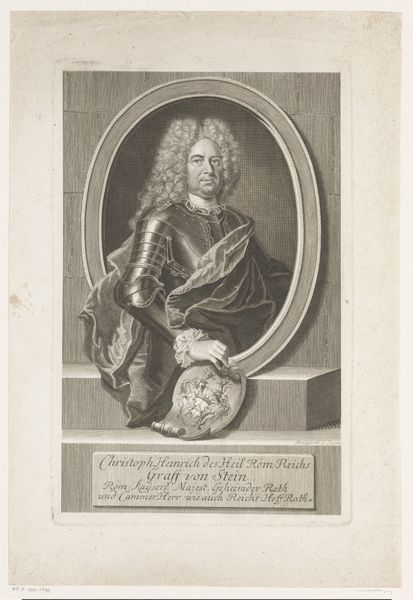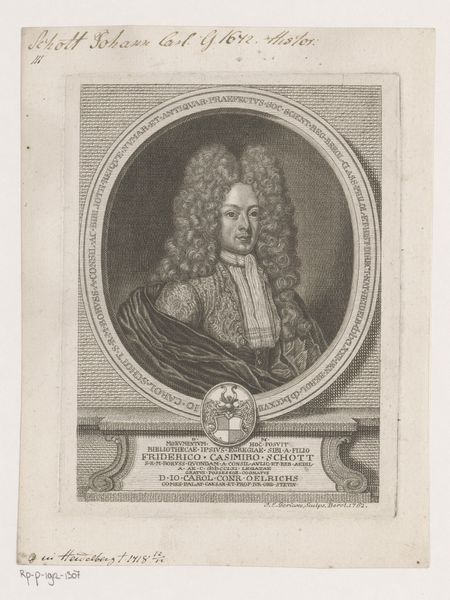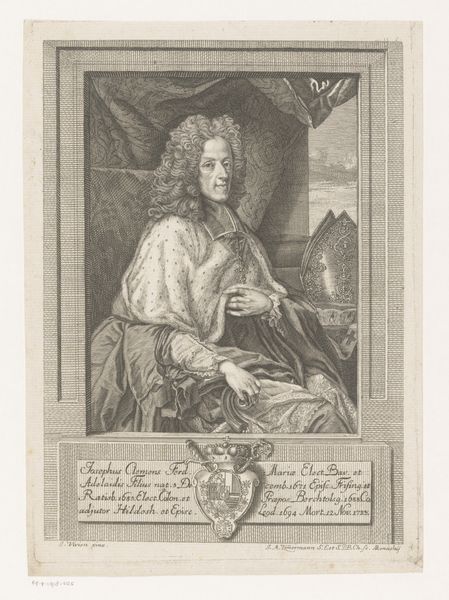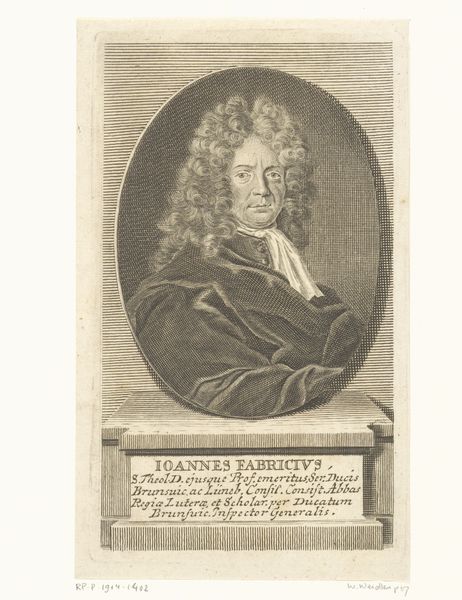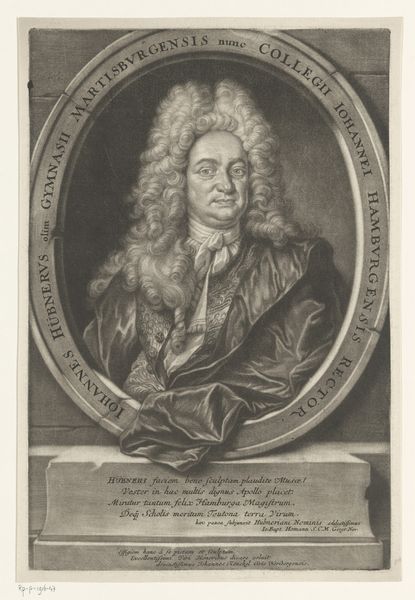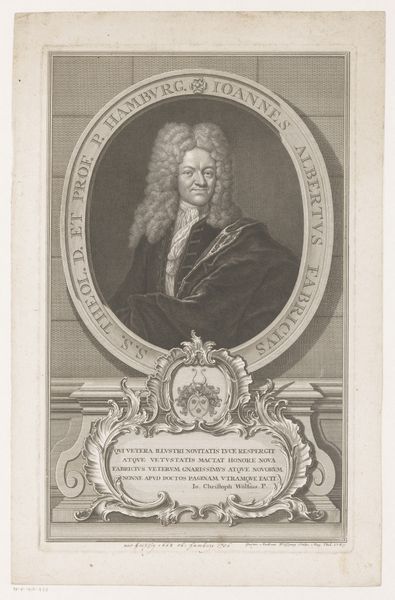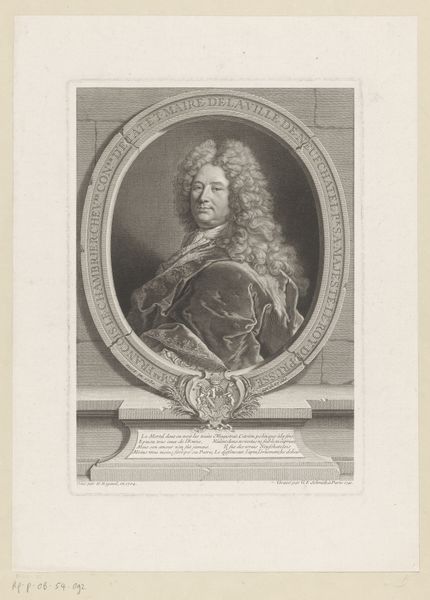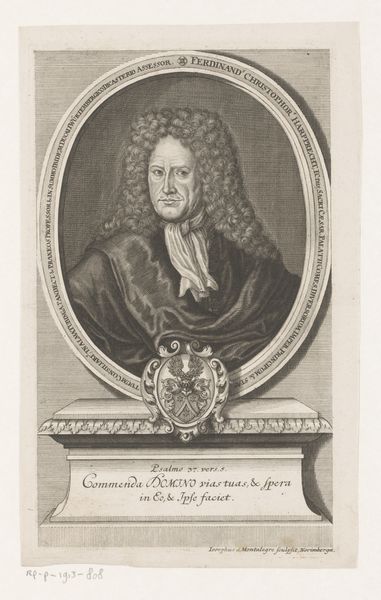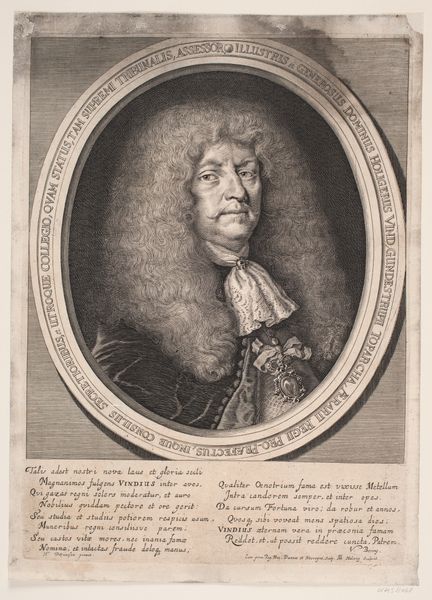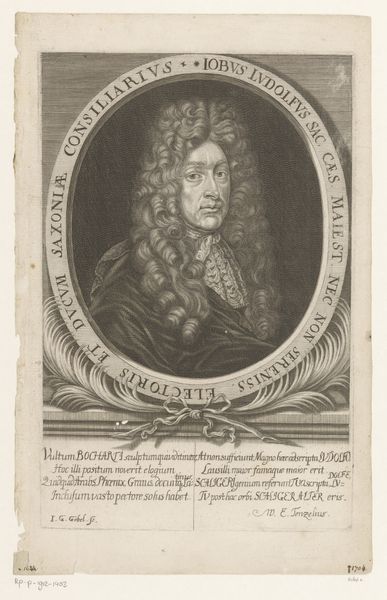
Dimensions: height 360 mm, width 243 mm
Copyright: Rijks Museum: Open Domain
Editor: This engraving, "Portret van Theodor Zwinger," dates from 1751 to 1800 and is attributed to Wilhelm Haas. The starkness of the image, the intense gaze, and especially the skull – it feels heavy with symbolism. What do you see in this piece? Curator: The skull, naturally, captures immediate attention. It's a vanitas symbol, reminding us of mortality, the fleeting nature of life and earthly pursuits. It speaks of the transition between states of being, knowledge of past lives, a contemplation of our finite existence. Consider its presence – it isn’t morbid, but presented as if integrated into his intellectual world. Doesn't that pose some questions? Editor: It does. The way he holds it – almost casually – does suggest it's part of his scholarly contemplation rather than a fearful object. What about the text encircling him? Curator: The text embedded within the engraving—dates and titles—functions almost as an ouroboros, reflecting a cyclical existence within a structured universe. Consider the carefully chosen words at the base. They ground us with mortal attributes. See if knowledge, industry, piety, and pure spirit can even be captured in image and allow someone to find favour. Could this object—this portrait—allow that? The engraver, therefore, challenges our perceptions, suggesting cultural values persevere beyond our lifetimes. It’s an interesting concept to visualize, don't you think? Editor: Definitely. The artwork feels like a commentary on cultural values and human existence beyond a mere portrait. Thank you! Curator: Indeed. Every element interweaves; offering insights into how knowledge, mortality, and reputation entwined. It enriches our cultural memories, doesn't it?
Comments
No comments
Be the first to comment and join the conversation on the ultimate creative platform.
